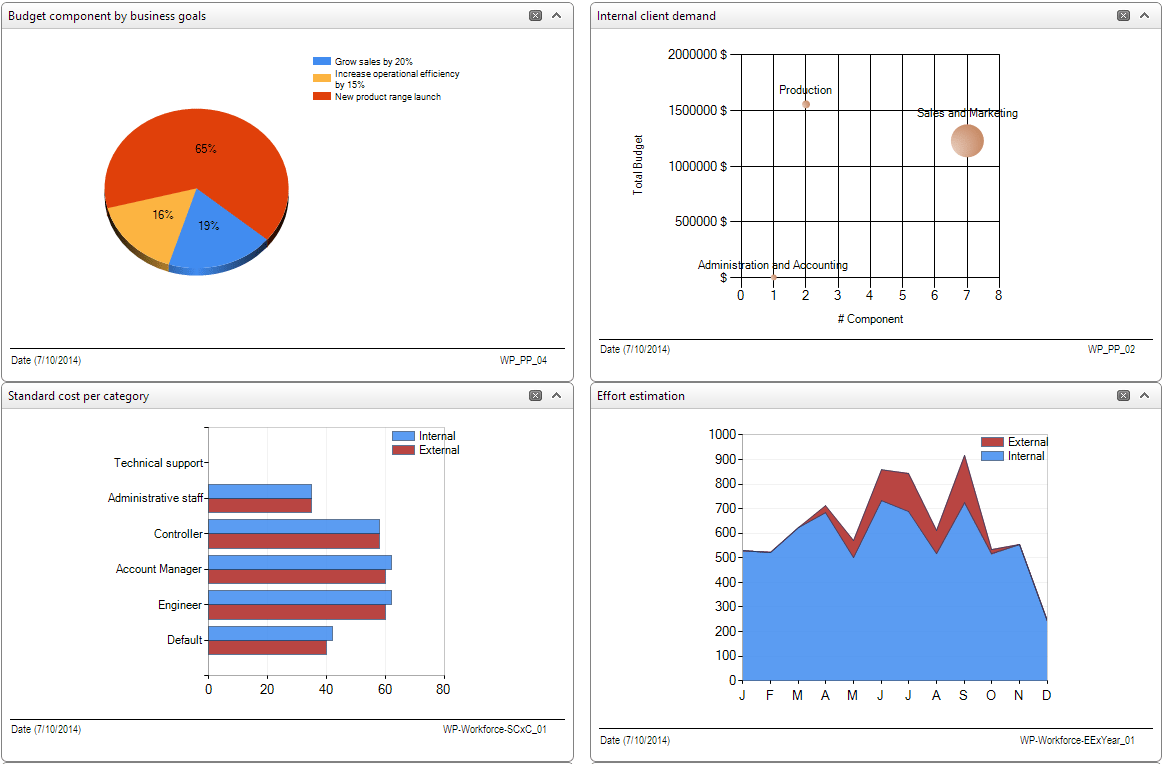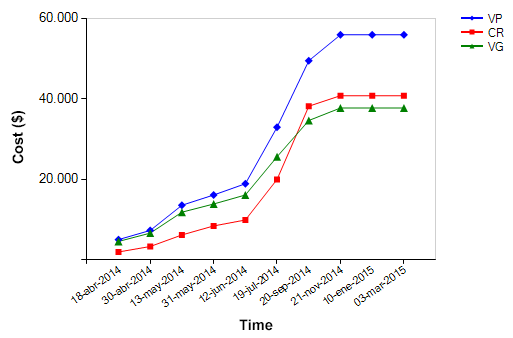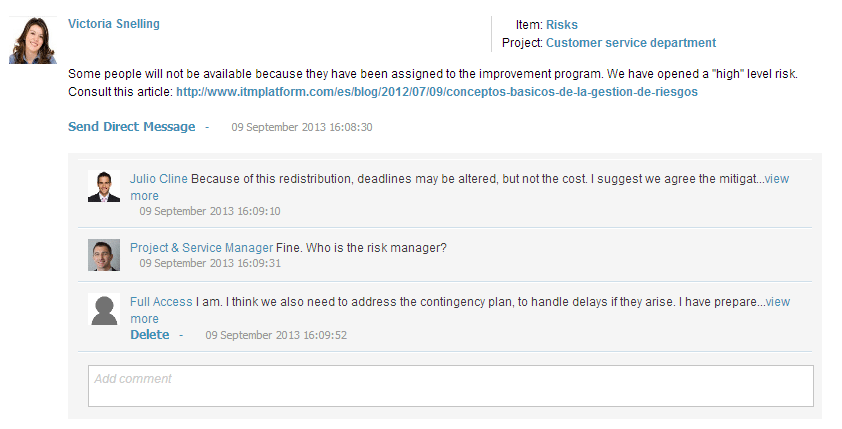Sometimes we think of project management offices as control centres of hours, tasks and people. ITM Platform suggests a more open, distributed and value-generating PMO.
Let’s make no mistake, control is important. But there are many ways to practice it, and responsible control is the best of them when it comes to project management.
The PMO should add value "to the steering level" with consolidated information and "towards the organization" with methods and tools.
Commonly, PMOs in organizations arise when there is an increasing feeling of a lack of control at the top management, cost rises and above all, deadlines are violated systematically. Then someone says "we need a PMO" when he really thinks "I do not trust my project managers and I want to control them".
The PMO (Project Management Office) often go through different maturity stages, but asides from the situation in which yours is in, the PMO should add value "to the management level" with consolidated information and “towards the organization” with methods and tools.
To add value to the steering level is easy to conceive but not that easy to accomplish: realistic economic assessments, deadlines respected, milestones delivered in a timely fashion, decision-making support about the portfolio.
Look at something as simple as a roadmap monitoring of portfolio:
Or, as more advanced, a dashboard with KPI:
The key to achieving valuable information is precisely to provide “top-down” mechanisms so that each participant (either a project manager, responsible for a task or team member) can do its job and that this information constitutes the aggregate information which later will be key elements to provide analysis information.
Here are some examples:
1. Controlling working hours
Do not sell the idea of control of the person, but instead, control of the whole project. Estimate hours and provide a report of each member, which will serve to improve their estimates to load balance resources necessary to make outsourcing decisions, move schedules and of course, on how the project is progressing in economic terms.
Remember that Earned Value gained, for example, is heavily nourished with reported hours, which is a main point of connection between reality and the system.
2. Project templates
If a PMO can contribute in something, it is corporate experience. When two projects look alike, take advantage of the elements that are common in both, such as tasks, documents, risks and people key to its success.
3. Communication
A PMO should facilitate communication between project members. Channelling it will lead to a bottleneck; instead, provide intelligent mechanisms allowing people to talk share knowledge in a socialized organization.
4. Tracking progress
In ITM Platform, reporting progress of project tasks and can be done at two levels: project and task. That is, a project manager may report the progress of all tasks, some or project as a whole. A responsible person for a task may report the progress of what has been entrusted.
Which is the key to the success of the PMO in this regard? Let each person take responsibility and the system will automatically build a consolidated monitoring mechanism.
In conclusion, through this article we wanted to show how it is possible that a PMO put focus on higher level functions without giving up responsible control.
If you need help in modelling and implementation of the PMO, count on our certified partners /en/partners






